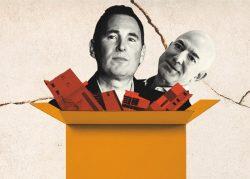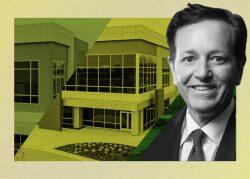 Amazon binge ends in hangover, halt on warehouse deals amid $4B loss
Amazon binge ends in hangover, halt on warehouse deals amid $4B loss
Trending
Amazon pullback, rising rates fail to cool Chicago industrial market
Landlord’s market stretching even with first red flags emerging

The decision by Amazon to cut back on warehouse spending – a sector in which it has been a major driving force – hasn’t damped the market for industrial real estate in Chicago, where demand is at a record. Nor have rising interest rates.
The asset class is so hot that even small Class B and Class C properties are suddenly attractive to a new segment of investors.
J&L Real Properties’ $36 million purchase this month of a seven-parcel Chicago-area portfolio totaling 450,000 square feet from locally based Clear Height Properties demonstrates the spillover of demand from the competition to grab big boxes prime to be leased to a single tenant.
Valuations of two of the properties included in the deal more than tripled amid the pandemic, and the entire portfolio sold for more than double what Clear Height paid to assemble it between 2017 and 2020. A 129,000-square-foot building leased to a single tenant at 5200 West Roosevelt Road in Chicago moved for $10.2 million as part of the deal after Clear Height bought it for $3.2 million just before the pandemic began. The other to more than triple its value was a small, 64,000-square-foot building in Carol Stream that was 82 percent leased by four different tenants.
As leasing activity concentrated among big tenants taking hundreds of thousands of square feet, new development was geared toward capturing those biggest users. Now, assets like those targeted by J&L – previously ignored by institutional investors – are getting fresh looks.
Their prospects are rising along with the need for more Class A industrial space.
“There has been tremendous rent growth in the smaller, incubator-type products,” said Adam Haefner, a Chicago industrial broker for Avison Young who represented Clear Height on the portfolio sale. “As it becomes more difficult to buy the Class A buildings, we’ve seen a lot more institutional capital come into this market for B and C properties. And no one builds these properties anymore. Rents historically haven’t been high enough to justify building that type of new product.”
Certain markets have experienced 50 percent rent growth during the pandemic for leases in the 1,000 to 10,000-square-foot range, he said.
While industrial rents are approaching levels that could support new development of smaller properties, rising interest rates combined with inflation of construction costs may limit new development to the larger asset class, market players told The Real Deal. That market will take at least a year or two to unwind near record-low vacancies.
Bridge Industrial just landed two leases for over 1 million square feet combined at its three-building, 1.6 million square foot development site still under construction in Melrose Park. Set to be completed in late 2023, it illustrates the deals developers are hoping to strike. The market can’t supply enough new space fast enough to satisfy demand. Record leasing activity in speculative properties of 9.3 million square feet in the first quarter shattered the previous record set just a quarter ago.
Obstacles for new development are appearing, though, even as a record amount of industrial space at 750 million square feet was under construction across the nation in the first quarter, according to Savills.
“We’ve been saying there’s historically low interest rates as long as we’ve been riding this uptick in the industrial market,” said Clear Height’s Joe Young. “As interest rates change it’s going to change who is willing to play and who is able to play in the industrial space.”
Inflation, especially of oil prices, is hurting consumers and tenants, and e-commerce sales as a percentage of total retail fell almost four percentage points from 2020 to the fourth quarter, all of which could challenge the industrial expansion, Savills said. Plus, Amazon, a major consumer of industrial space, is pulling back on its real estate spending after admitting it overextended during the pandemic.
“As a proportion of Chicago’s market, the development is not nearly as great here as Columbus or Indianapolis,” said Jeff Devine, a Colliers industrial broker who wasn’t involved in the deals. “The day will come when there is an oversupply and demand abates significantly. But you almost can’t find modern, new space now. It almost doesn’t exist. That never happened here.”
Landlords still have a chance to keep the odds in their favor, though, even past the one- to two- year runway that supply is expected to remain short of demand. As rising interest rates further constrain the ability of developers to start new projects, properties already built across asset classes – from J&L’s new small facilities to Bridge’s massive ones – will have their values lifted.
“There are headwinds for sure,” Haefner said. “For existing products, that might actually help if some of these new products get shot down. For a turn into a tenant’s market you need to have multiple options for every buyer that’s looking for space. That’s just not the case right now. We need to see a lot more products available and to come on the market.”
Read more
 Amazon binge ends in hangover, halt on warehouse deals amid $4B loss
Amazon binge ends in hangover, halt on warehouse deals amid $4B loss
 Chicago investor quadrupled $39M technology park investment in 4 years
Chicago investor quadrupled $39M technology park investment in 4 years




